Wilds Blue Yonder, Part 1
Now that we've walked through Wilds of Eldraine's vision design and set design and looked at the vision design handoff document (Part 1 and Part 2), it's time for some card-by-card design stories. This week and next, I'll talk through various card designs from the set.
Armory Mice, Cheeky House-Mouse, Raging Battle Mouse, and Three Blind Mice
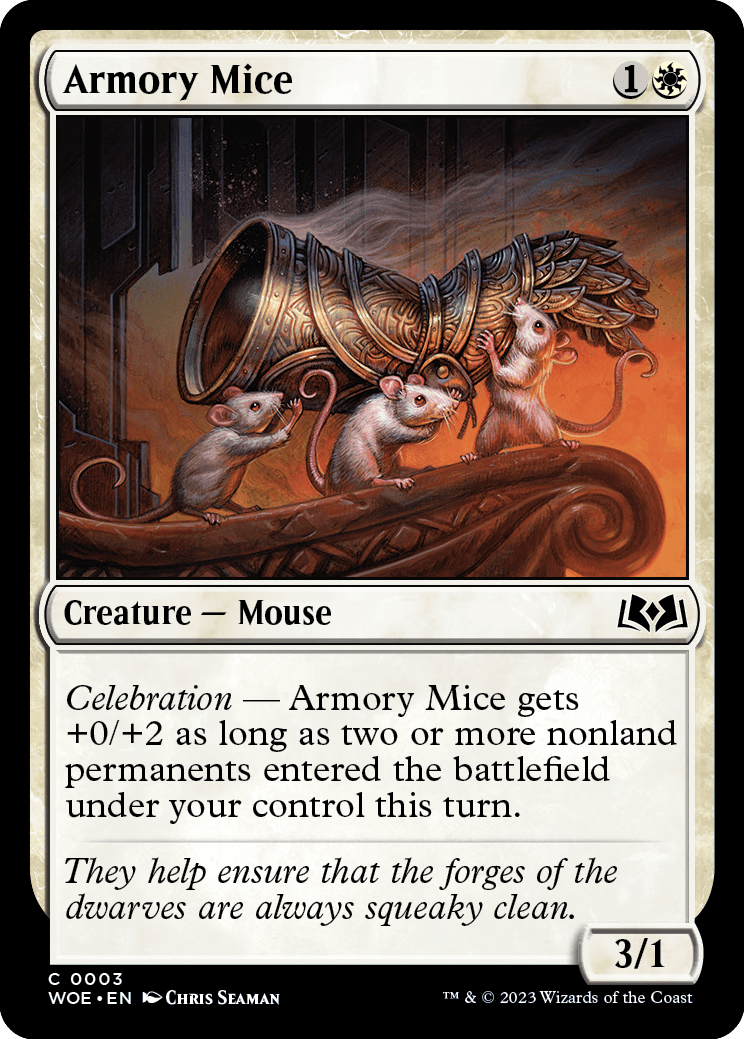
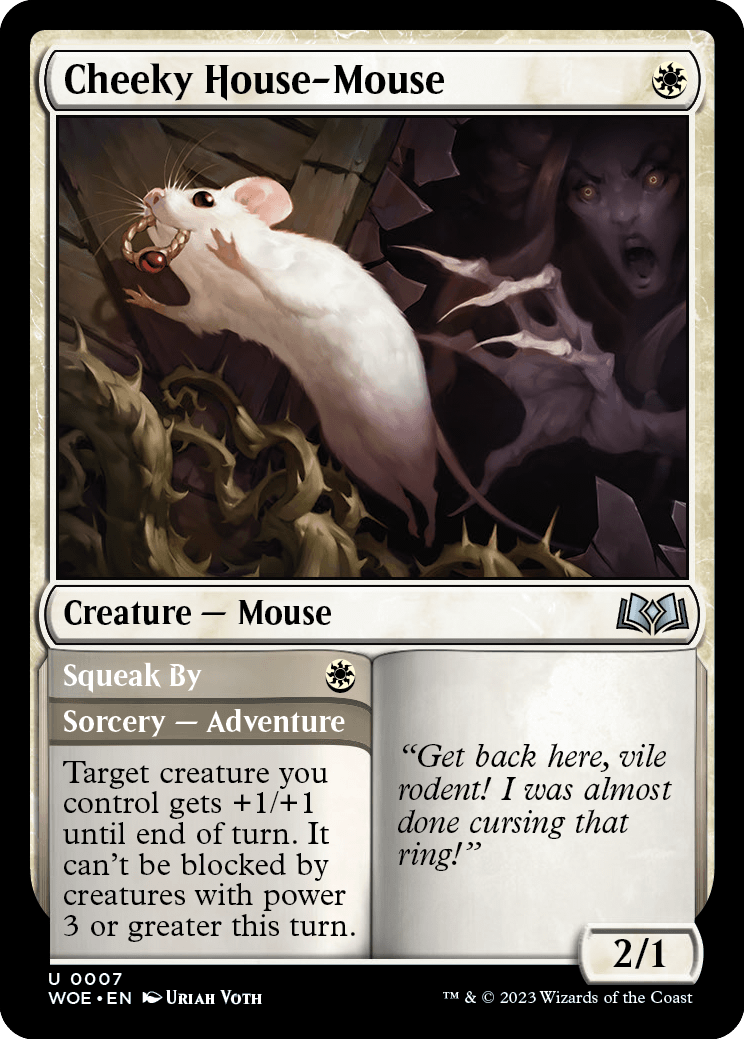
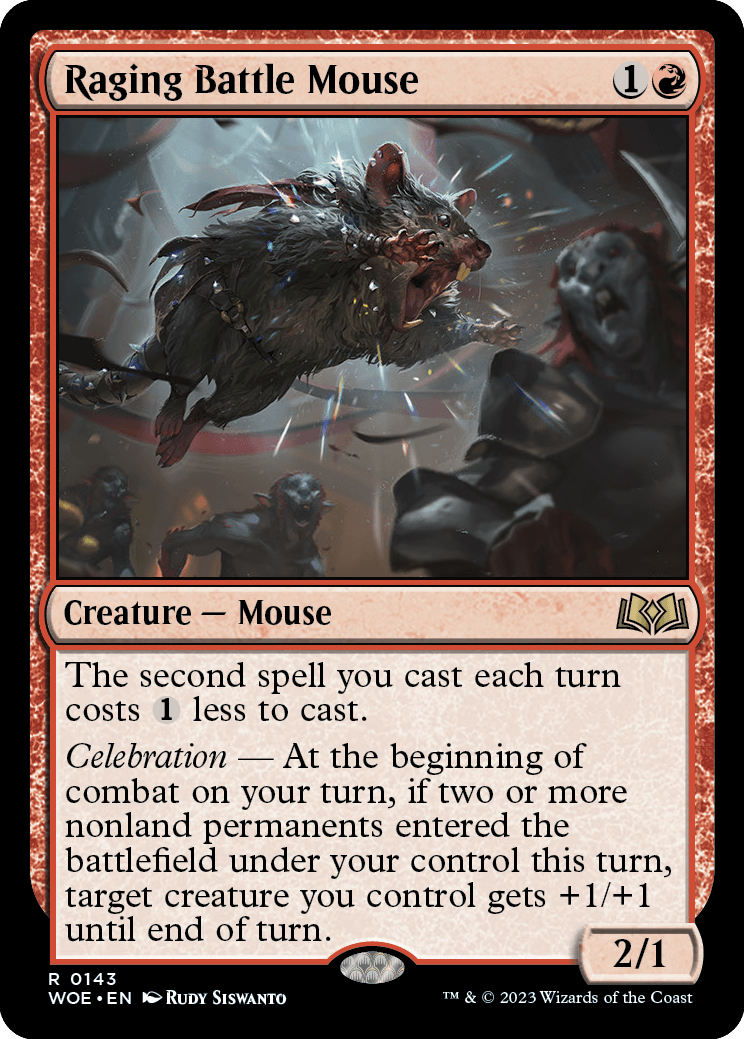
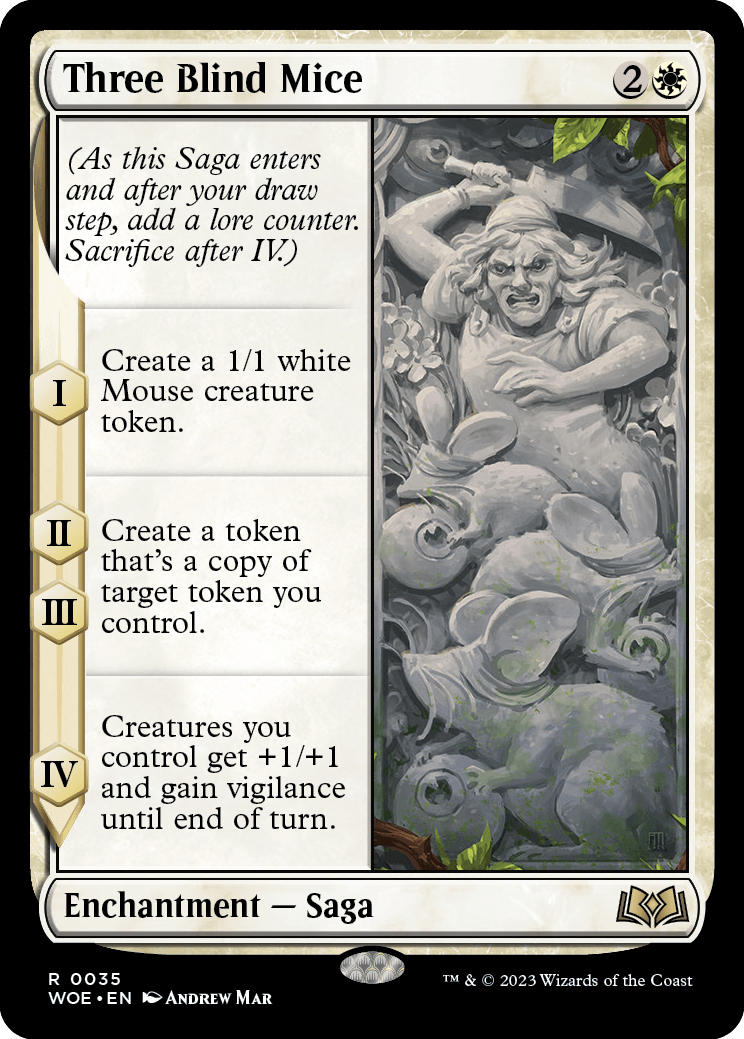
Our card stories begin with original Throne of Eldraine. We wanted to make a pumpkin carriage. It's probably the most iconic fairy-tale vehicle, and it seemed like an auto-include in the set. The carriage is pulled by horses, so we thought it would be fun to make Horse tokens to crew the carriage. It then dawned on us that the horses are actually mice that have been transformed through magic. It would be even more flavorful if we could make Mouse creature tokens. There was just one small problem. Mouse creature tokens weren't a thing. We thought about making Rat creature tokens, but the flavor seemed off. In the end, we made them white, partly to differentiate them from Rats and partly because white mice are a real-world thing.
The response from the audience was very positive. In general, most of you tend to like when we make flavorful new creature tokens. This, of course, led to the question we always get when we make something you like. "When are we getting more Mice?" Mice are 1/1 white creatures, and while almost every set has 1/1 white creature tokens, usually they want to flavorfully be something else. For simplicity and consolidation purposes, we tend to make all creature tokens in a set that are the same color and size the same creature type. So, to get Mouse creature tokens, they have to be important enough to the flavor to supersede other 1/1 white tokens.
But that's just Mouse tokens. Once a creature type exists, players like to see it on creature cards. Now, there are a few creature types, like Saproling, that we've decided to keep as tokens only, but that wasn't necessarily true with Mouse. If we found an individual card where it made sense, we were happy to call it a Mouse. The first Mouse card was


And that was it, until Wilds of Eldraine. The main set has four (as you can see above), and one of the Commander decks has an additional new Mouse with
One of the things we need to do when making a set is think ahead. Are there needs for upcoming sets that we might be able to address in the current set? We refer to it as "seeding." For example, let's talk Bloomburrow. Bloomburrow is a set coming out in the second half of 2024 that takes place on an animal plane. Doing an animal set requires enabling players to make animal-themed decks, but not every set is necessarily an appropriate place to include particular animals, Mice being the perfect example.
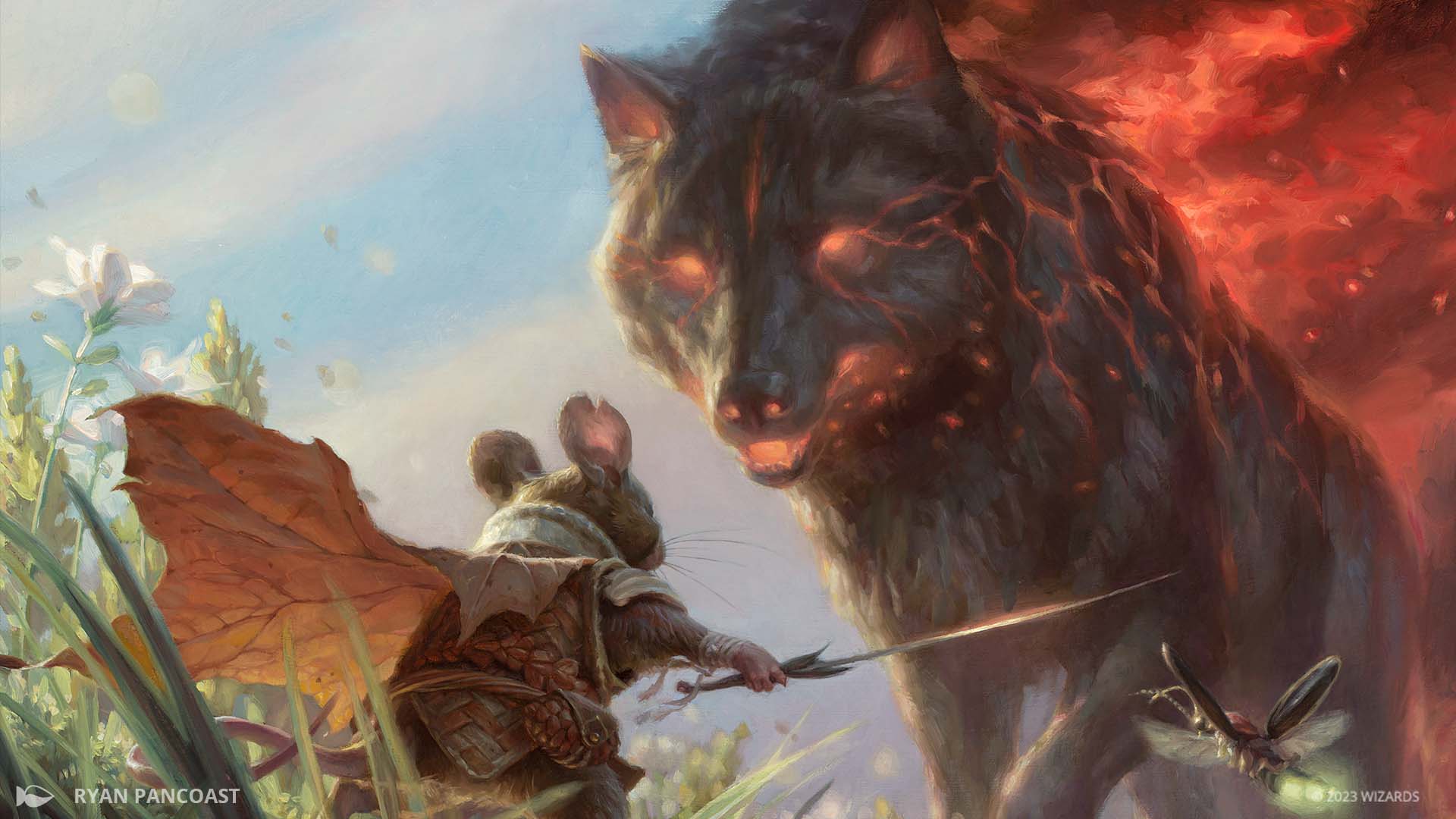
When we teased Bloomburrow, we showed this image, which clearly indicates that Bloomburrow has Mice (plus, I specifically said in the panel that the set has Mice). Anyone familiar with the animal world genre knows Mice often play a big role, so that shouldn't be much of a surprise. That meant that we needed to look at every set we were doing that would end up with Bloomburrow in Standard and see if there was an appropriate place to seed some Mice. Wilds of Eldraine was one such place as animals are common in fairy tales. That's why we included a few more Mice than we did on our last visit. I won't say which ones, but the set also has a few other animals included with Bloomburrow in mind.
Candy Trail and Three Bowls of Porridge
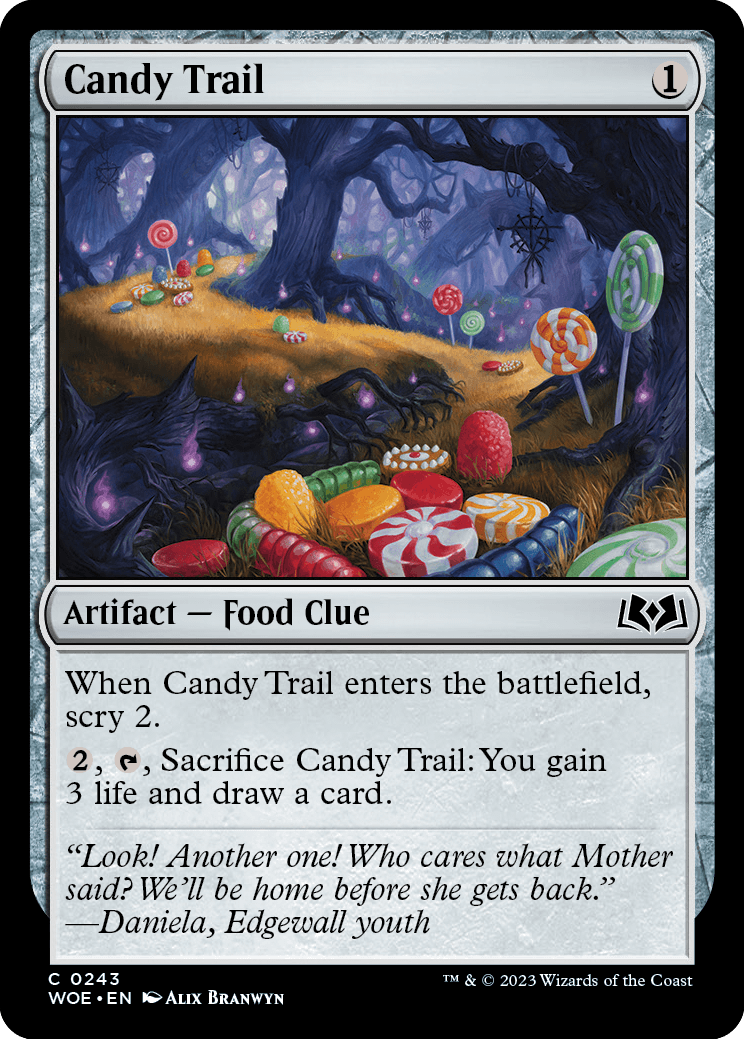
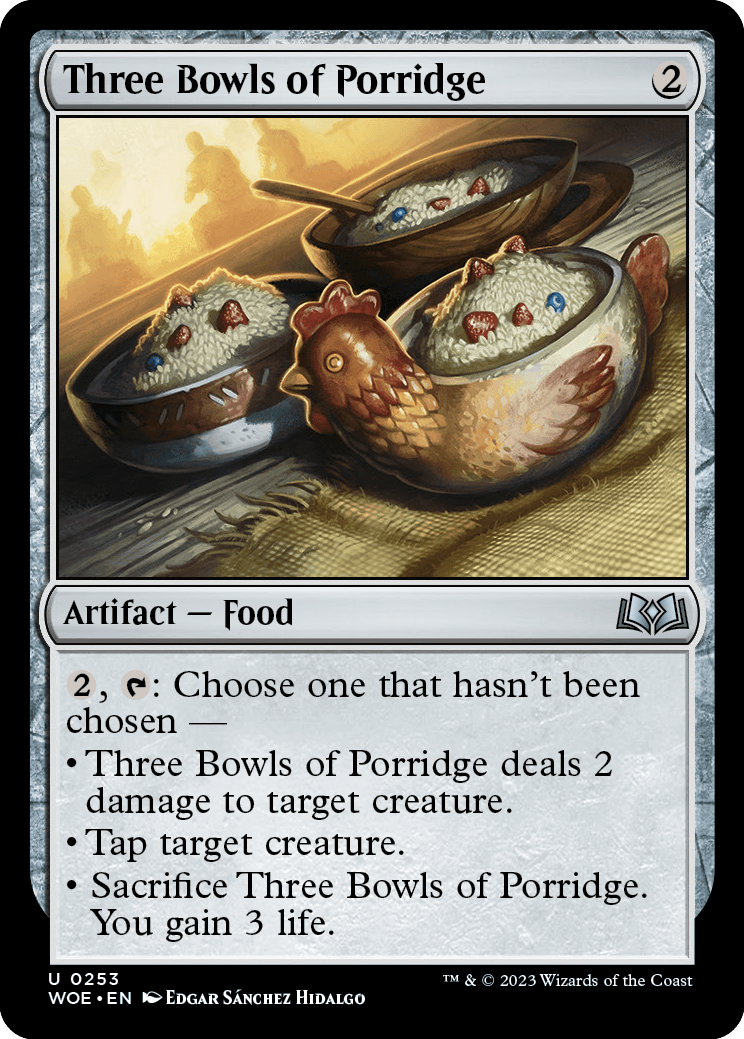
I primarily work on exploratory design and vision design these days. This means while I design a bunch of cards, most of them don't make it to print. However, top-down sets tend to have a better hit rate for card designs from vision design making it to the end, as they're more focused on capturing individual concepts. These two cards happen to be based on designs that I turned in during the very first week of vision design.
Let's start with
Breadcrumbs
1
Artifact — Food Clue
2,T, Sacrifice CARDNAME: Gain 3 life.
2,T: Sacrifice CARDNAME: Draw a card.
Back in Shadows over Innistrad, we introduced Clue tokens. Ixalan then introduced Treasure tokens. Throne of Eldraine, Food tokens. And so on. In Throne of Eldraine, we made a card called
I was tickled by the idea of finding a way to make an artifact match multiple artifact subtypes. While doing some initial design for Wilds of Eldraine, I found my Food Clue. In Hansel and Gretel, the brother and sister are aware that their stepmother has convinced their father to lose them in the forest. To find their way home, the siblings leave a trail of breadcrumbs. Breadcrumbs are clearly Food, and it's showing them the way home, so that felt Clue enough to me, so my first attempt at this design was literally just making a Food plus a Clue. I should note that Throne of Eldraine did represent this concept on the card Trail of Crumbs, but we decided we were fine redoing basic fairy-tale concepts if we had a different enough mechanical take on it.
It turns out that a Food plus a Clue all by itself wasn't quite good enough to play. Remember, usually Food and Clues are the byproducts of another card. Our first move was to combine the life gain and card drawing into a single ability. We then added scry 2 as an enters-the-battlefield trigger to make it worth playing. The creative also changed a bit to match our version of the Hansel and Gretel story.
I knew it had to be a Food, and I knew I wanted to capture the "too hot, too cold, just right" element of the story. Initially when I was working on the card, I had it have three different activated abilities, but it didn't seem to match the story. Goldilocks didn't keep eating the first bowl of porridge. She sampled each one once. How could we capture that? What if we had one activation with three options that you could only choose once each, with the abilities put in the order they happen in the story?
Too hot seemed easy as a direct-damage effect. That's how we tend to concept something burning someone. Likewise, tapping a creature felt like the obvious cold ability as that's how we tend to conceptualize freezing someone. The final option would sacrifice the card, partly to capture it being the Food subtype, but also to get rid of it once you'd used all the abilities. This also heavily encouraged you eating it last, which matched the flavor.
The card went into the early vision design file and, other than its mana value change, stayed as is to print.
Expel the Interlopers and Talion, the Kindly Lord

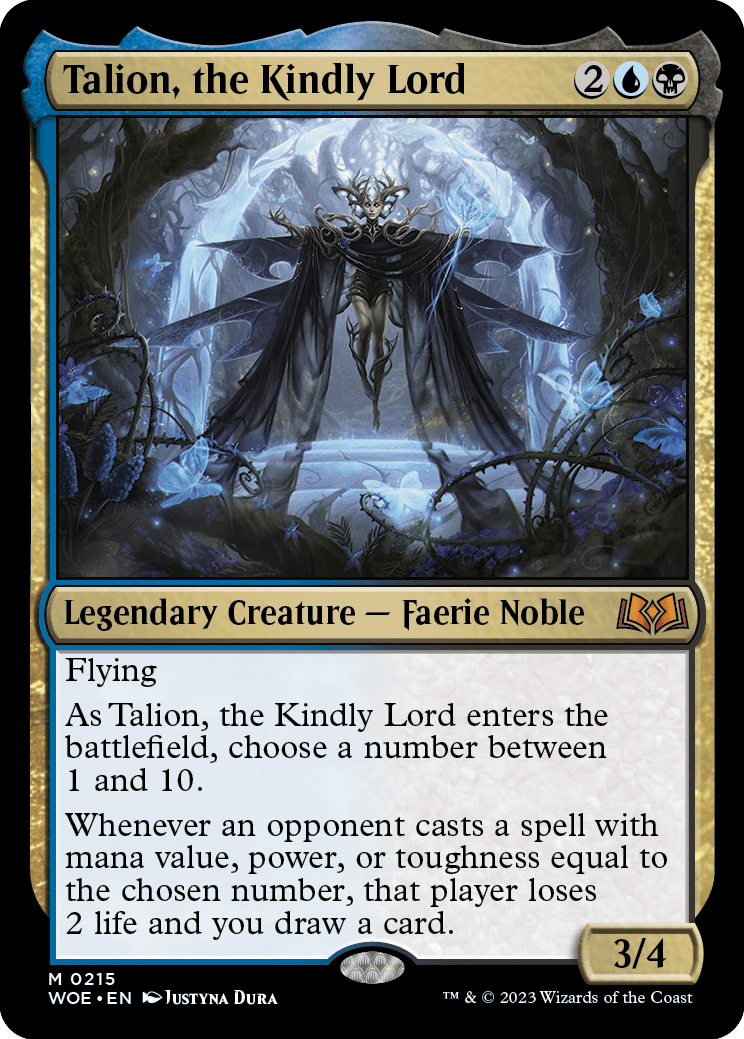
From the very beginning of Magic, there have been X spells where you can choose how much mana goes into the mana value, affecting the size of the effect, but there's a similar design we haven't used much, what I'll call the "choose a number" mechanic. The idea with this subset of spells is that it gives the caster a range of numbers to choose from. Unlike X spells, though, higher numbers don't always mean stronger effects, so designing these cards is a bit trickier.
The first "choose a number" card didn't even use that actual rules text initially (although it does now in Oracle).
The next card in this category was
Next up is
Now we get to our first Un- design (there are a few of these),
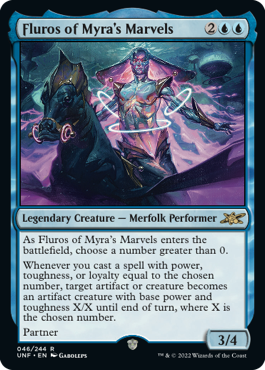

You can see as I'm running through these designs, that they've started picking up in recent times. Unfinity was the first set to ever have two "choose a number" cards (with Wilds of Eldraine being the second). The Myra's Marvel cycle included build-around creatures that cared about different aspects of a card, things normal sets usually don't care about. Fluros cares about particular numbers appearing anywhere on a card, while Hardy cares about the number of lines in flavor text.
This brings us to
I think the "choose a number" design vein is pretty big, and I feel it's something we'll be using more of than we have in the past.
Johann, Apprentice Sorcerer

This card has prompted a common design question on my blog, so I thought I'd answer it here. In the past when we've used cards that can cast spells and/or play lands off the top of your library, the top card has been revealed. More recently, though, cards like Johann just let you look at the top card of your library. Why the change?
The change is twofold. First, hidden information is an important aspect of gameplay. When an opponent knows everything in your hand, it requires a lot more thought to make sure they're thinking through every possible combination of effects. It also removes any chance of surprise. The hand is hidden because it allows for fun moments where you get to surprise your opponents, and it keeps them from having to track that.
Second, early on, we revealed the top card as we felt it was a downside of the mechanic. With time, we realized that was a mistake and that we could cost the effect without the downside, and in general, this would make the card play better, so that's now our default.
Mosswood Dreadknight
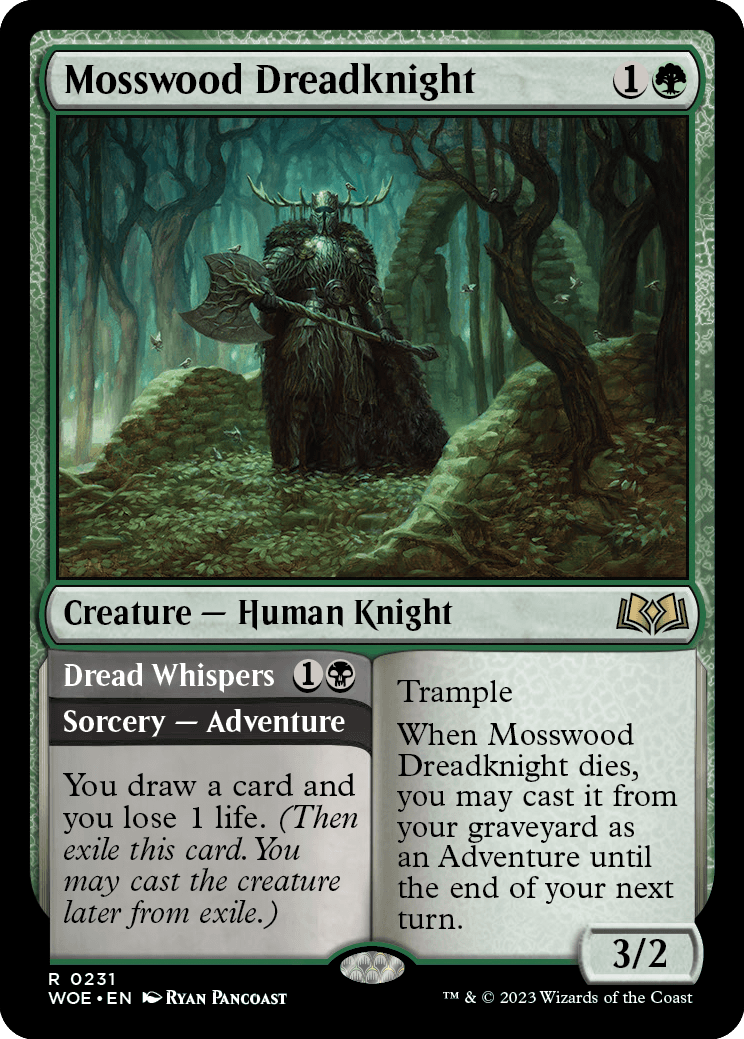
The Green Knight is a character from Arthurian legend. The character dates to the 14th century and shows up in different Arthurian stories. He's usually dressed in green, often with green skin, and is most often Arthur's adversary. A common trait of the character is that he comes back from the dead.
In Throne of Eldraine design, we made a Green Knight. As I've explained before, there aren't many characters that a lot of people know from Arthurian legend, so the list to pull from for designs is short. (That's one of the reasons I pushed to add fairy tales.) As part of an exercise in vision design, I took all the Arthurian-inspired cards, meaning ones specifically designed top down from actual elements of Arthurian legend, and showed them around the building to see which ones had some amount of recognizability. Note that the cards didn't have the name of the thing being referenced, as the goal of this task was to see if players could recognize the Arthurian influence through the lens of it becoming a Magic card with our own spin on the character, object, event, etc.
The task didn't go particularly well as it turns out the average person just doesn't know much about Arthurian legend, let alone through the lens of it being turned into a Magic card. Some cards did okay. A fair amount of people could recognize Excalibur or Merlin, but many of the cards fared poorly. Literally zero people recognized the Green Knight. But wait, it gets worse. After showing them the cards, I would walk them through what each card represented, so besides seeing if they recognized The Lady of the Lake as a Magic card, I would discover whether they even knew the concept of The Lady of the Lake. Zero people I talked to had heard of the Green Knight, and I talked to around 50 people. So, we ended up cutting it from the set.
When Throne of Eldraine came out, I was asked about the Green Knight. He's a popular character for fans of Arthurian legend, and there was some sadness that he hadn't been included. It was then I realized we made a mistake. When leaning into a source material, you need some deep cuts for fans of that source material, and even though the average person might not know the Green Knight, fans of Arthurian legend did.
So, when we returned to Eldraine, we were aware we needed to do the Green Knight. First, there just weren't many things to top-down design that people knew, and most of them had been used in Throne of Eldraine. Second, a Green Knight movie had come out, which had raised awareness a little of the character. Third, we just owed it to the fans.
The challenge of making the Green Knight concerned color identity. Black represents the character best. He's a villain known for coming back from the dead, both things that would normally be in black. But it just seemed weird to have a Green Knight that wasn't literally a green Knight. Multicolor didn't feel like the right choice, as we wanted the Green Knight's frame to be green, and that would make it gold. In Throne of Eldraine, we solved this problem by giving him a black activated cost. Wilds of Eldraine gave us an even better option.
Adventures were returning, and one of the tweaks we were doing was off-color Adventures where the Adventure spell was a different color from the main spell. We could make the Green Knight a green creature, obviously a Human Knight, but with an Adventure in black. We then made sure the card had a means to get itself back to the battlefield. We tied it to the player casting an Adventure to make it more synergistic with the set. So finally, Arthurian fans get their Green Knight.
In the Wilds
That's all the time I have for today. As always, I'm eager to hear your thoughts on today's article, on any of the cards I talked about, or on Wilds of Eldraine as a set. You can email me or contact me through any of my social media accounts (Twitter, Tumblr, Instagram, and TikTok).
Join me next week for part two of my card-by-card design stories.
Until then, may you create some stories of your own with Wilds of Eldraine.

